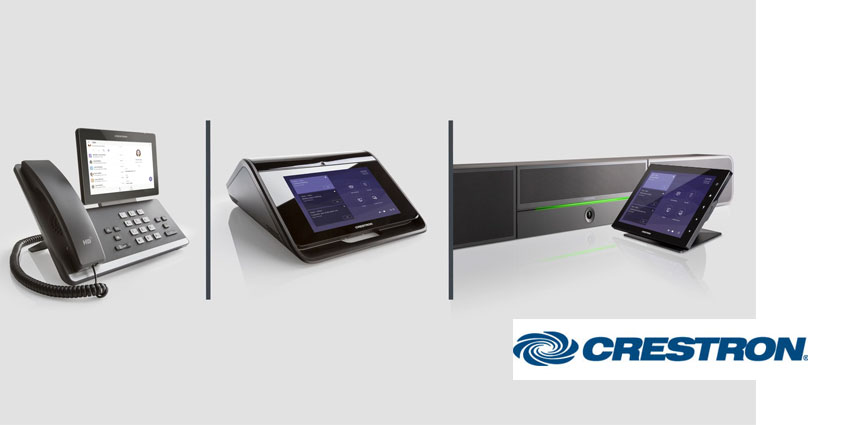When you look at the cutting-edge solutions on offer from Crestron, it’s hard to believe they’ve been in business for nearly 50 years. Certainly the period since 1971 is a geological era in tech terms — but it’s only by continual evolution that a brand remains relevant and important to customers in such a fast changing world.
Such as the appointment of Joseph Sarrasin, Director of Strategy for Unified Communications, 6 years ago, to head up the new UC department. Since then, he’s taken the new line from experimental status to a significant tier of business income — thanks to key strategic partnerships, brought together under the platform-agnostic family of devices, Crestron Flex.
Sarrasin explained, “Crestron offers workplace technology solutions that pair nicely with your overall collaboration and desktop and mobile solution – unifying Microsoft, Zoom and your building management ecosystem…”
“We can tie everything together so it’s easily manageable and scalable, and still provide you with that great experience with your partners”
Unified solutions
That’s going to become even more important as we enter 2020, and more and more users shift to cloud-based solutions. Indeed, Sarrasin predicts that this will be a pivotal year for that transition:
“Right now most customers are dipping their toes in with cloud pilots. By the end of 2020 it’ll be the opposite — people will be talking about how they’re working on phasing out what they have left of their on-premises solutions… One thing we’ve seen that’s very interesting is that industries who were typically very averse to using cloud services have come 180 degrees — so the finance sector is now very pro-cloud, even the United States Department of Defense.”
Outsourcing risk to specialists increasingly makes sense, as Sarrasin elaborates: “The best bank in the world has a security team trying to protect a large number of endpoints across many services, but if you deal with a company like Microsoft or Amazon they have much larger, focused teams…” Which in an era of global-scale threats, require vulnerabilities to be patched in real time as needed.
The future: as-a-service
The flexibility and scalability aspects of cloud-based provision also has growing attractiveness to customers in a changeable world, including where hardware is concerned.
“2020 is when we’ll see more of our progressive customers take true advantage of this kind of solution, such as ‘Meeting-room-as-a-service’”, Sarrasin continued. Crestron has one major client already on this kind of contract, and, “we support them with devices as part of that model, something that lends itself very well to the way we support devices in combination with cloud management platforms. One facilitates the other.
“So it works well, and I think there’ll be a lot more adoption of that into 2020. There will still be customers who want to spend capital budget in a fixed way, but more and more will shift”
Sarrasin has clearly been in the game long enough to spot trends, and also to be cautious about making predictions too far out into the future. But he concluded by describing these two trends — the shift to cloud-first, and device-as-a-service, as tectonic shifts for the UC industry. Which means, “2021 is going to be VERY interesting”.







